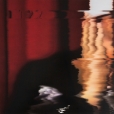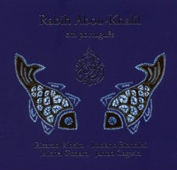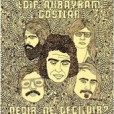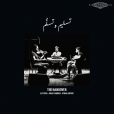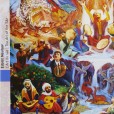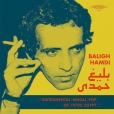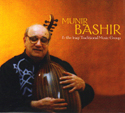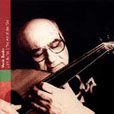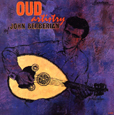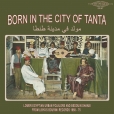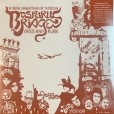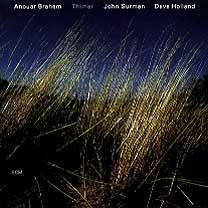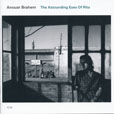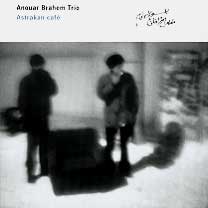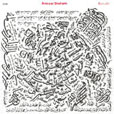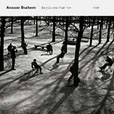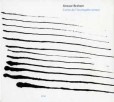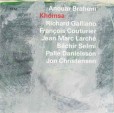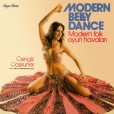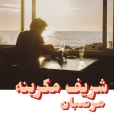Your basket is empty

Oppositional Anatolian psych from 1977, drafting in members of Moğollar and Bariş Manço’s Kurtalan Ekspres. Pop-up gatefold sleeve, as originally.
‘Elegantly combines the delicacy of classical Arabic music, the raw expressiveness of Egypt’s countryside music, and the spontaneity of free improvisation, carefully obliterating the artificial separation between acoustic and electronic instruments. Despite the remarkable absence of any percussion or drums, The Handover is an extremely groovy band, with an ability to slow down and accelerate the tempo in almost telepathic synchronization at exactly the right moments.
‘Alongside the tight ensemble playing there is plenty of room for individual expression as the oud, synthesizer and violin take turns playing solos on top of repetitive riffs. Native Alexandrian Ayman Asfour plays violin with breathtaking beauty, not afraid to make it buzz, squeak and rattle. Belgian/Norwegian keyboardist Jonas Cambien makes the synthesizer a melodic instrument in its own right, at times evoking almost classical Maqam, at other moments coming straight out of an Egyptian wedding. The oud forms the backbone, as Aly Eissa’s solos guide the listener from minimalist, meditative drones, to a compelling climax, and back to earth.
‘There is much more to The Handover’s sound than the obvious references to Arabic and Egyptian music. The opening drone section of the album is pushed towards abstraction and even noise, and the vintage Farfisa organ gives the music a touch of 70s psychedelic rock. The repetitive riffs can be reminiscent of Embryo’s experiments combining krautrock with influences from the middle-east, but the use of repetition to induce trance dates way back in Egyptian music, and is present in many rituals like Sufi and moulid celebrations. The composed melodies on this album couldn’t be possible without Eissa’s deep love for this music. And what The Handover does with this composed material couldn’t be possible without three strong individual voices, their love to play music together and their dedication to push the traditions forward.’
‘One of the most important Arabic composers of the twentieth century — writing for legends Umm Kalthum, Abdel Halim Hafez, Sabah, Warda, and many others — leading his own Diamond Orchestra, with Omar Khorshid on guitar, Magdi al-Husseini on organ, Samir Sourour on saxophone, and Faruq Salama on accordion. During this decade, Hamdi fully realized an international, hybrid music which incorporated beat-driven Eastern-tinged jazz, theremin-draped orchestral noir, Khorshid’s searing guitar solos, and a buzzing, sitar-based, Indo-Arabic psychedelic exotica… some of the hippest music of the era, anywhere.’
Partner of the Expressions East set. Heavy vinyl, too.
‘Egypt’s ‘official’ popular music throughout much of the twentieth century was a complex form of art song steeped in tradition, well-loved by the middle and upper classes. The music business was highly structured and professional; centred in Cairo. However, far from the metropolis, to the north and northwest, in towns like Tanta and Alexandria and extending across the Saharan Desert to the Libyan border, a raw, hybrid shaabi/al-musiqa al-shabiya style of music was springing up, supported by small, upstart labels.
‘This compilation covers the full range of styles presented by the short-lived but fecund Bourini Records, launched in the late 1960s in Benghazi, Libya. Gobsmacking moments include Basis Rahouma’s transformation into a growling, barking man-lion, and Reem Kamal’s onwards-and-upwards hand-clapping party banger, with a grooving nihilistic dissonance reminiscent of the Velvet Underground. The thorough-going contrast with mainstream Egyptian popular music is stark in Ana Mish Hafwatak, its vocal woven deftly through a constant accordion drone, and the sparse, slow-burning lament Al Bint al Libya. Whereas the mainstream was aspirational, projecting Egyptian culture at its most refined, the performances captured by Bourini were authentic expressions of ordinary, everyday life. More than half a century old, this music has lost none of its urgency, presence, or relevance.’
John Surman, bass clarinet and soprano saxophone; Dave Holland, double-bass.
Crafted, swinging, soulful Middle Eastern jazz, led by oud and bass clarinet. Dedicated to the great Palestinian poet Mahmoud Darwish. (Why he didn’t win the Nobel Prize isn’t a mystery.)
With Barbaros Erkose, clarinet; Lassad Hosni, bendir, darbouka.
From 1990 — a trio with oud, violin and percussion.
Ravishing, chilled interplay between oud, piano and accordion.
The master oudist with Jack DeJohnette, Django Bates and Dave Holland.
‘Not only one of the year’s best ECM releases; it’s a classic-in-the-making that should ultimately be considered one of the label’s very best recordings in its nearly fifty-year history’ (All About Jazz).
‘Megarbane finds a sonic through-line in his surrounding soundscapes as he draws on the chaotic energy of the crowded Beirut metropolis (Souk El Ahah), the warm atmosphere of the Lebanese countryside (Chez Mounir), or the lushness of a Mediterranean beach resort (Portemilio). In many ways, Marzipan is a cartographic feat — it travels and traces a journey across many dimensions, both sonic and physical. Megarbane’s instrumental catalogue is suitably wide-ranging: toy glockenspiel, harpsichord, pedal steel, a classic Wurlitzer et al are used liberally on the record. Free-ranging influences — beloved artists like Ahmed Malek and Issam Hajali, West African funk, European soundtracks — result in a record of somewhat unparalleled expansiveness. Floating melodies and frantic rhythmic interludes nestle together with psychedelia — fuzz-drenched guitar, sliding microtonal interludes, hypnotic rhythmic breakdowns. The resultant sound is as sprawling as the musician’s instrumental dexterity. The closer Bala 3anouan can be translated loosely to ‘without address’ — a fitting final word.’

